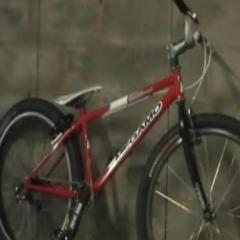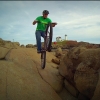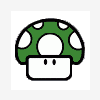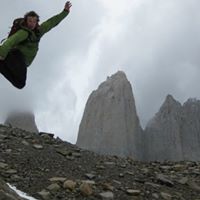-
Posts
596 -
Joined
-
Last visited
-
Days Won
58
La Bourde last won the day on April 21
La Bourde had the most liked content!
Contact Methods
-
Website URL
http://
Previous Fields
-
Bike Ridden
Stock
Profile Information
-
Interests
Stock trial, Computer science.
-
Location
France, on the rocks
Recent Profile Visitors
10157 profile views
La Bourde's Achievements

Trials King (4/9)
267
Reputation
-
I agree, it would be nice to have reach and stack values for the bikes. Somehow wheelbase length seems to be more important in trials... One can interpolate how much is the reach knowning the head angle, bb height, chainstay, headtube and fork length, but it is not really precise. Bar height relative to the bottom bracket is an important figure to understand how the bike is easy to bunny up. Effective reach (with the backsweep the bar considered) but also bottom bracket height compare to the wheel axle and width of the bar (if the difference is more than a few inches/cm) play also a role. As I wrote earlier, always consider the weight distribution and the amplitude of movement you get.
-

Rear hubs, which is most reliable, hope, i9 ect
La Bourde replied to Damon_Watson's topic in Trials Chat
The KOM Xeno hub looks very promising to me. Ali C is now sponsored by them. Hope he will ride one on his Hex and give some feedback. -
BB height: the higher the bb is: the easier it is to stay on the rear wheel or to move on the rear wheel, the easier it is to spin, the harder is it to stay balance on two wheels or once you are in manual (less stability) Chainstay length: the shorter the chainstay, the easier you can go in manual or lift the front wheel, the easier you can move the bike on the rear wheel the less time you have to lift the rear wheel, e.g. when climbing a step, you have slightly less time to execute your extension wheelbase: the longer the more stable the bike feel on two wheels the more time you have to lift the rear wheel (see chainstay) the harder it is to put weight on the front the harder it is to move on the rear wheel or spin the most place you have to execute an extension it can ease tap or rolling onto high obstacle Regarding the other factors, it is difficult to explain clearly. I think it is important to understand that: every change in the geometry is a compromise mostly a single change impacts the whole system (and thus feeling) it is all about weight distribution and lever effect stabilty or maniabily: you cannot have both at the same time amplitude and reaction time shall also be considered stiffness impacts also the overall bike feel Consider weight distribution and lever effect and you will better understand how each factor affects the feeling of the bike. Let's take some examples: if you rise the bottom bracket, your center of gravity is now slightly higher compared to the rotation axle that are the wheel axles. It means, your body has an higher lever effect when you move it backwards for example. So a front wheel lift is easier ... sort of because there is another important point to consider: by raising the bottom bracket, you basically load more the front with your mass (you have more weight on your arms). This makes the front wheel lifting for the first centimers/inches more difficult ... To compensate that, you can raise your bar. It will be easier to lift the front wheel, but more difficult to load it, i.e. front moves will become more difficult. And because you increase the distance between bottom of the front wheel and your arms, you have less place to low down you front wheel before jumping, which is also a drawback ... if you put your bar further away on an horizontal axle (i.e. same height) : you have now more place to execute an extension, so the amount of work you deliver is higher. But also you need to move more to load you front wheel, which is maybe more exhausting. You can put more weight on the front wheel if you are able too. On the otherside, it makes raising the front wheel more difficult, cause your center of gravity is slightly more forwards and your arms are more stretched if you use a wider bar: the bike is more stable, it lower your chest, you load more the front wheel. But amplitude of movement of you upper body decreases (the arm being futher apart) and because your body if further from the axle of rotation, it is harder to spin. Hope it helps!
-
I use a magura louise lever with mt4 caliper combo for several weeks now and it feels OK to me. Better that with the original mt4 lever. The louise lever have some drawbacks too, e.g. they are not as strong as other maybe, but I am happy with them currently.
-
It seems the piston expands when in contact with water for a long period. The info is from Adam from Tarty if I recall correclty. There is not much to do I think.
-
Go for a Hashtagg freewheel then. One requires the ISIS tool to remove them: Alternative, find a fixed hub with spline body or a crankset like the bonz one: https://www.trial-bikes.com/en/bonz-pro-light-bb24-crankset-p-537672.html I think using the Hashtagg freewheel makes more sense for you, it will be easier to fix compare to the bonz freewheel. If you want, I have a new Tensile freewheel to sell that also use the ISIS tool. It has only 60 POE. I will be happy to sell it to you.
-

Turning my dmr rhythm into a hybrid street trials bike
La Bourde replied to Alc2's topic in Beginners Trials Chat
I suggest a Hope Pro V (or even pro IV or pro 2 evo 40t) ss/trials or maybe Industry Nine (really expensive). Do you have the 142 or 135 rear ends installed currently? If you have the 135*10, you can also buy a trial hub and a freewheel. That might be slightly less expensive. If the price difference is not much, I would rather go for a hope hub. Regarding the rims, I have a good experience with DT swiss, either the ex471 or fr560. Nice build quality. Spank has a good reputation too. -

Turning my dmr rhythm into a hybrid street trials bike
La Bourde replied to Alc2's topic in Beginners Trials Chat
Hi, Difficult question. Why do you want to sell the bike at all? DJ, skatepark or street is not what you were looking for? Trials or street/trials require a specific bike past a certain level, but you can learn the basics with any bike. Some bikes are easier to start with for sure, but the question is whether you will stick to it or not. A I was moderator on a French trials forum, I observed too often people selling their bikes after one year of trials. My advice is to start with your bike as this and learn trackstand, bunny, manual, getting up some small steps, bunny to rear, 180, riding backwards, hoping on the rear wheel backwards and if you have a front brake, stoppies, bunny up to front, 180 on the front wheel, etc. As soon as you really feel addicted, ask yourself again how do you really want to ride. Meet people owning one and ask them to ride with. I think you won't find easily a driver with 15t compatible and even in this case, the small amount of points of engagement is a big drawback. You can swap for a rear wheel with e.g. hope hub but it is quite expensive. On the other hand, it is a nice hub for a DJ bike too. -
Even more than 10 years later, this frame still looks nice. Happy build!
-
Saw a couple of days ago that Europeans can't get the TartyBikes RD parts anymore due to the new GPSR regulation (General Product Safety Regulation). I had the pleasure to buy some excellent Vee adapters last year and it is a shame Europeans can no more order some.
-
On my cruiser BMX, I used to ride Power block from Tioga: they were quite good on the pumptrack and in 24x2,10" should be OK as front tire. Kenda has the small block eight in 24x2,1 too, but I had a lot of pinch flat with this one on a 26" bike. I did not like the K-rad neither on a 26". There is also a new Maxxis Snyper, 24x2,0, with more knobs, will be too thin as rear tire. Like Swoofty, I like the holy roller a lot (as a rear tire on a 26" though).
-

Which bike to buy as a beginner (small budget)?
La Bourde replied to ZioPera4316's topic in Trials Chat
Hi and welcome, A trial comp bike like the Echo pictured is not suited at all for street/trials. It does whether spin nor roll easy, it is almost impossible to bunny hop, making street moves much more difficult. It will be good to learn the trial specific moves though, like statics, sidehops, etc. These moves are the basics and being able to execute them well will make you a much better rider later on. But maybe you will get bored with this bike... Trials is very specific and for example, sometimes as a mountain biker, I miss the feeling of speed (which is less the case in street/trials). And even riding on a sidewalk with this kind of bikes is a pity ... The position is horrible, the rear brake loud, the freewheel has a lot of drag. I really appreciate to ride on a comp bike, but it is so specific to this discipline and street/trials are so good nowadays, it makes sense to buy one only if one really wants to improve and train specific moves or if you only ride comp trial style. By the way, the spec is great. Although, the Echo rear brake is not so reliable and the stem looks quite long for your size. If you are more interested in street trials, go for the Zoot. The bikes has nice parts on it for the price and as a beginner, I expect you won't stress the frame so much the first few months (or do you have a BMX/dirt background?) You can later update the frame and thus become a solid build. As for the wheel size, 26" rolls better on obstacles (does not get stuck into holes), requires slightly less precision on bars or small obstacles, but is more difficult to spin (e.g. 180°) or to move. -
A friend prefers the conti to the Schwalbe Table top. Recent addition are Cast tyres made by Pirelli and "designed" by Danny and Fabio. https://castmtb.com/collections/tires Some interesting design choices stated on their website. So expensive though. Hopefully some feedback will be available soon.
-
The new bike is shorter and it seems Charlie feels well on it. Massive moves, as usual!
-
Was not expecting this! It seems the new Clean owner has invest some money...Nina and now Charlie. Which is hopefully good for the riders. Hopefully the products will evolved too.








